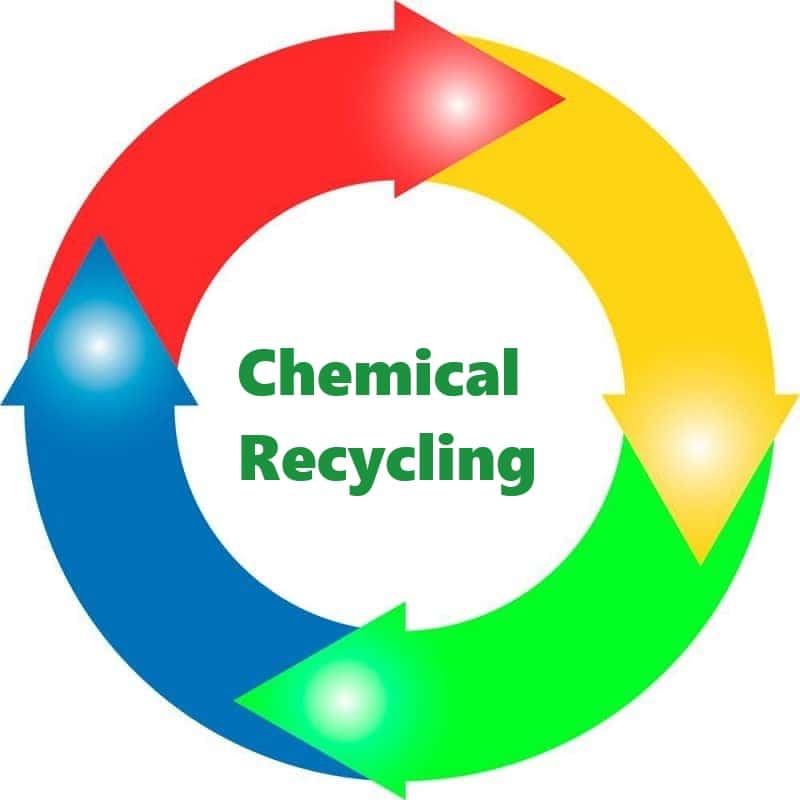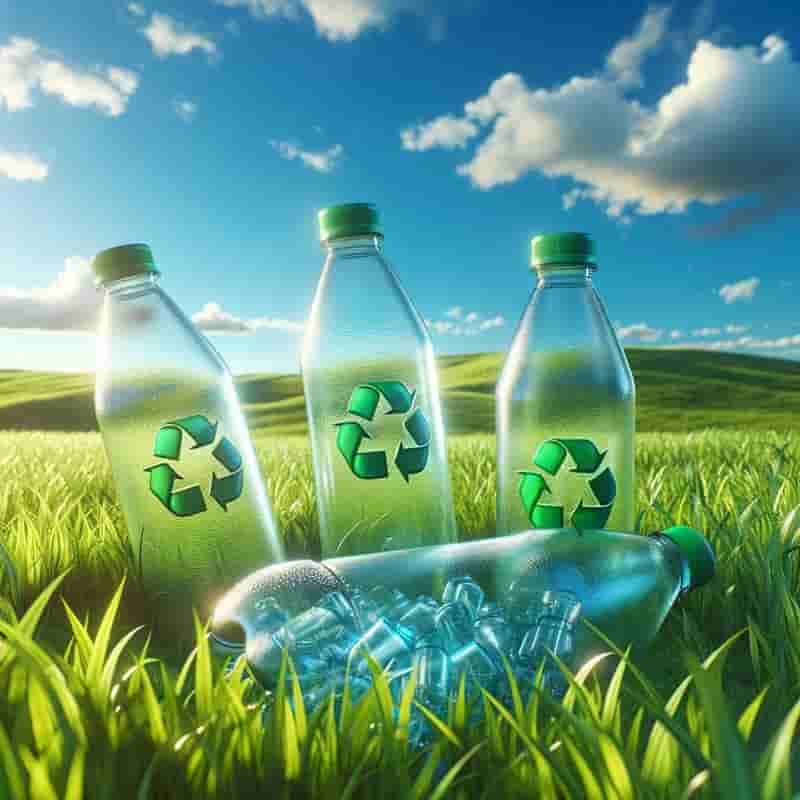Plastic recycling -Plast Nordic and Norner work towards advanced PET recycling at scale in Nordic region 10-07-2024
Plastic recycling
Crude Oil Prices Trend

Crude Oil Prices Trend by Polyestertime
Biotrend and Freepoint Eco-Systems to Develop Plastic Recycling Projects
Freepoint Eco-Systems, a U.S.-based plastic waste solutions provider, is partnering with Turkish waste management company Biotrend to develop advanced recycling projects. These initiatives aim to divert end-of-life plastic waste from landfills and incineration, transforming it through chemical recycling into pyrolysis oil, which is used in the production of petrochemical products, including resins for new plastics.
Biotrend is setting up a cutting-edge plastic recycling facility in Aliağa, İzmir, Turkey, with a processing capacity of 60,000 tons per year. Plastic recycling
This strategic partnership plans to extend its efforts beyond Turkey, targeting projects in the Balkans and Central Asia. Collectively, they aim for a total recycling capacity of 250,000 tons of waste plastic annually.
Upon successful completion of due diligence, Freepoint Eco-Systems intends to purchase approximately 10% of Biotrend’s shares.
This acquisition will be executed through a private placement, involving an investment by Freepoint in newly issued shares. Plastic recycling
This investment not only solidifies the partnership but also demonstrates Freepoint’s commitment to supporting and expanding advanced recycling infrastructure in the region.
Through this collaboration, Biotrend and Freepoint Eco-Systems are set to make a substantial impact on reducing plastic waste and promoting circular economy practices in Turkey and beyond. Plastic recycling

First feedback on the Newcycling process
The material obtained from the physical recycling of post-consumer multilayer films was tested on a Polifilm pilot line.
The German recycler APK has carried out blown film tests using regenerated material with the Newcycling process, which allows the recovery of waste from post-consumer multilayer flexible packaging through selective dissolution with solvent. Plastic recycling
Pilot-scale tests, conducted in collaboration with German film maker Polifilm Extrusion, confirmed the workability and quality of the material, with surface defects and odor that – according to APK – are close to what is obtained by extruding virgin material.
Despite coming from post-consumer, claims the German company, the quality is comparable to that of the best recycled material available on the market today, however obtained from packaging waste from the commercial channel, which is more homogeneous and less contaminated. Plastic recycling
“In the film blowing process, the post-consumer recycled material from the Newcycling process proved to be highly processable – confirms Gottfried Weyhe, Senior Manager Research & Development at Polifilm -. We managed to produce a very thin film, with a thickness of ten microns In terms of quality parameters, such as specks and odors, the recycled performed optimally and is close to virgin.”
“It is a big step forward in our journey – says Robert Marx, Chief Technology Officer of APK -. We are implementing interventions to further optimize Newcycling products and the first quantities of even higher quality material are already available”.
The Newcycling process combines mechanical pre-treatment steps with solvent purification and separation to eliminate additives and printing inks. This allows you to efficiently recycle waste from complex and flexible packaging, such as multilayer films, and obtain pure, high-quality materials at the end of the line.

Chemical Recycling: A Closer Look
The Plastic Problem
Plastic waste is a global concern. Every year, over 380 million tonnes of plastic are produced worldwide, equivalent to more than 100 times the weight of the entire blue whale population. Unfortunately, only 16% of plastic waste is recycled into new plastics, while the rest ends up in landfills, incineration, or the ocean.
The Promise of Chemical Recycling
Chemical recycling, also known as “advanced recycling,” offers an alternative approach. Unlike traditional mechanical recycling, which involves melting and reshaping plastics, chemical recycling aims to break down plastics into their raw materials.
The goal is to transform hard-to-recycle plastics back into reusable materials, reducing waste and environmental impact. Plastic recycling
How It Works
- Breaking Down Plastics: Chemical recycling involves various processes, such as pyrolysis, depolymerization, and solvolysis. These methods break down plastics into smaller molecules, including monomers and other useful compounds.
- Turning Plastic into Oil: One exciting development is the ability to convert plastic waste back into oil. By mimicking the natural processes that created fossil fuels, chemical recycling can produce a type of “infinite” plastic. This oil can then be used as a feedstock for new plastic production. Plastic recycling
- All Types of Plastic: Unlike traditional recycling, which often rejects certain plastics due to color or composition, chemical recycling can handle all types of plastic. This inclusivity makes it a promising solution for tackling plastic waste.
Challenges and Criticisms
- Energy Intensive: Chemical recycling requires significant energy input, which has been a stumbling block. Sometimes, it’s more cost-effective to produce new plastic products directly from crude oil rather than recycling existing plastic.
- Lack of Transparency: Critics argue that chemical recycling lacks transparency. Understanding the environmental impact and safety of these processes is essential for responsible implementation. Plastic recycling
- Fuel vs. New Plastic: Some chemical recycling facilities end up producing fuel (such as diesel or gasoline) rather than new plastic products. Balancing these outcomes is crucial for achieving sustainability goals.
Regenyx and Beyond
Regenyx, based in Oregon, exemplifies the challenges faced by chemical recycling facilities. While they aim to transform plastics, operational hurdles and energy demands hinder their full potential.
However, it’s essential to recognize that chemical recycling is still an evolving field, and ongoing research and innovation can address these limitations. Plastic recycling
The Bigger Picture
As we strive for a circular economy, chemical recycling remains a valuable tool. It complements mechanical recycling and offers hope for a more sustainable future. However, we must balance its benefits with environmental considerations and ensure transparency throughout the process.
In conclusion, chemical recycling holds promise but requires careful navigation. By addressing energy efficiency, transparency, and product outcomes, we can unlock its full potential and contribute to a cleaner planet. Plastic recycling

Plast Nordic and Norner work towards advanced PET recycling at scale in Nordic region
A partnership between Plast Nordic and Norner aims to use alkaline hydrolysis to recycle 97% of PET waste generated in the Nordics back into their raw materials, targeting the packaging and textile industries with their ‘virgin-quality’ rPET resin. Plastic recycling
Over 400,000 tons of PET waste is currently thought to exist in the Nordic region, while exports are thought to result in ‘significant’ energy loss and ‘irrational management of substantial value’.
Now the partners intend to recycle approximately 97% of the waste back into their raw materials, with advanced recycling thought to be the ‘only’ technology to achieve circularity without sacrificing the quality of the recyclate.
In turn, it is set to increase access to recycled materials, reduce transportation, and create new jobs. Plastic recycling
Plast Nordic will utilize alkaline hydrolysis technology, alongside patented microwave technology from Switzerland, to recycle both plastic and textiles. It is said to offer resilience against waste impurities (up to 30% impurities without affecting quality).
The process is reportedly chemical-free, instead making use of microwaves, and Plast Nordic explains that the process takes under 10 minutes to complete. The reactor is set to run continuously rather than in batches, handling both plastic and polyester textiles; this is expected to result in virgin-quality recycled PET resin. Plastic recycling

Mechanical Recycling: A Sustainable Approach
The Plastic Waste Challenge
Plastic waste poses a significant environmental challenge. With millions of tons of plastic produced annually, finding effective ways to recycle and reuse plastics is crucial. Mechanical recycling offers a practical solution by utilizing physical processes to recover plastic materials. Plastic recycling
How Mechanical Recycling Works
- Sorting: The process begins with sorting plastic waste. Different types of plastics are separated based on their resin codes (such as PET, HDPE, or PVC). Automated systems and manual labor help categorize the plastics.
- Washing and Cleaning: Once sorted, the plastics undergo thorough washing and cleaning. This step removes contaminants, dirt, and labels.
- Grinding: The cleaned plastics are then ground into smaller pieces. This process increases surface area and prepares the plastic for further processing.
- Re-Granulation: The ground plastic is re-granulated, meaning it is melted and formed into pellets or granules. These granules serve as the raw material for new plastic products. Plastic recycling
- Compounding: In some cases, additives or reinforcing agents are mixed with the re-granulated plastic to enhance its properties. Compounding ensures that the recycled plastic meets specific requirements for various applications.
Advantages of Mechanical Recycling
- Energy Efficiency: Mechanical recycling consumes less energy compared to producing virgin plastic from fossil fuels. It reduces the need for oil extraction and refining. Plastic recycling
- Closed-Loop System: By reusing plastic materials, mechanical recycling contributes to a circular economy. It minimizes waste and conserves resources.
- Reduced Environmental Impact: Properly recycled plastics reduce greenhouse gas emissions, landfill usage, and ocean pollution.
Challenges and Considerations
- Contamination: Contaminants (such as food residue or incompatible plastics) can affect the quality of recycled plastic. Plastic recycling
- Proper sorting and cleaning are essential.
- Degradation: Each recycling cycle can lead to some degradation of plastic properties. Balancing recycling rates with material quality is crucial.
- Design for Recycling: Manufacturers must design products with recyclability in mind. Choosing compatible plastics and avoiding complex blends helps improve recycling efficiency. Plastic recycling
Conclusion
Mechanical recycling plays a vital role in our efforts to create a more sustainable future. By embracing this process, we can reduce plastic waste, conserve resources, and minimize our impact on the environment.

Plastic recycling

